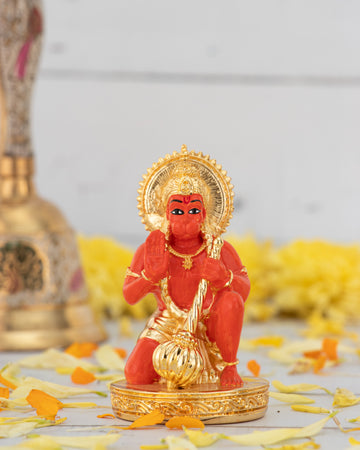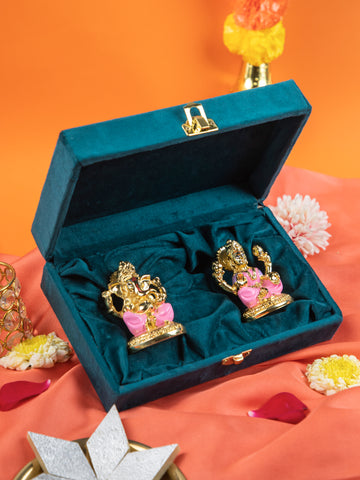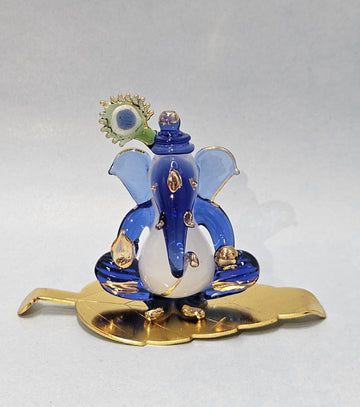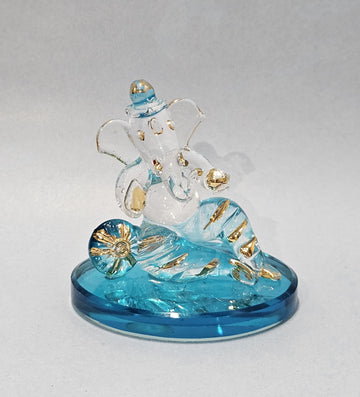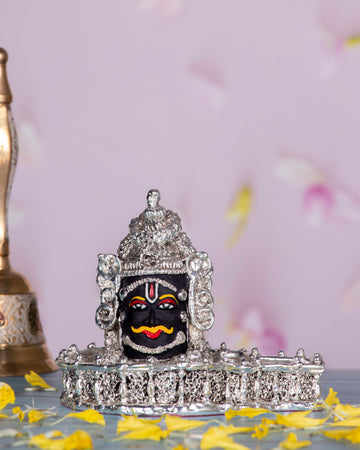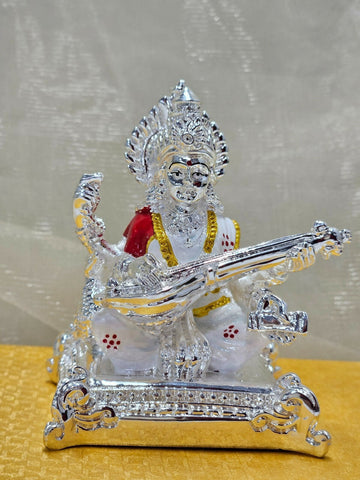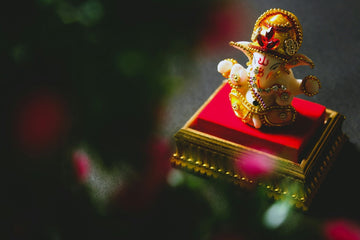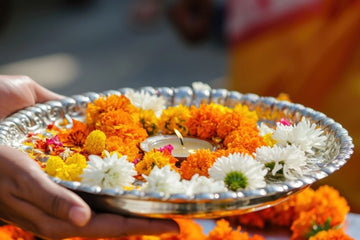The pooja area is sacred in any family where customs are valued and inner tranquility is fostered. It is the center of the house, where devotion becomes a daily practice and divinity meets discipline. It is more than just a space for prayer. However, the tools you employ are just as important as the desire behind them if you want your spiritual practice to feel rooted and satisfying.
Knowing the essentials of a pooja can strengthen your bond and give each offering a sense of completion, regardless of how long you've been doing rituals or how new you are to your spiritual practice.
Let's examine the fundamental pooja items that contribute to the creation of a calm, strong, and Indian handcrafted gifts rich atmosphere in more detail.
Idols and Deity Frames: The Centerpiece of Devotion
The presence of divine idols or deity frames is the first and most crucial component of any pooja arrangement. These holy images are more than just ornaments; they serve as focus points for your prayers, thoughts, and energies. Whether you are drawn to Durga's protecting presence, Ganesh's strength and wisdom, or Krishna's playful grace, pick idols that speak to you individually.
During your rituals, frames featuring mantras or images of the Trimurti, Lakshmi, or Balaji can also be used as potent visual affirmations. The energy they emit is increased when they are kept clean, well-lit, and at eye level.
Diyas and Lamps: Inviting Light and Purity
Without burning a diya, a ritual cannot be considered fully completed. The triumph of light over darkness, knowledge over ignorance, and divinity over ego is represented by the warm, bright flame. Setting the tone for presence and purity, a diya is frequently lit first during a pooja.
Pick from hand-carved marble lamps, floating tealights, or traditional brass diyas. Place them purposefully and keep them filled with oil or ghee. Perfect for morning affirmations or evening thankfulness, the gentle glow not only brightens the room but also soothes the mind.
Incense and Dhoop: The Scent of the Sacred
A space's energy can be significantly changed by fragrance. Lighting dhoop or incense sticks is thought to invoke heavenly presence and purify the air. Aromas such as camphor, frankincense, rose, or sandalwood stimulate the senses and create an atmosphere conducive to introspection.
Include a conventional incense stand or a tiny, fireproof holder in your setup. As you meditate or chant, allow the smoke to gradually ascend; it will carry your intentions into the invisible realm, bridging the gap between the spiritual and material realms.
Pooja Thali: Organized Offerings with Grace

Your ritual would be more elegant and well-organized with a pooja thali. Usually, it contains essentials like flowers, camphor, rice, haldi, kumkum, and a diya. Your worship is more fluid and deliberate when you use a thali that is arranged beautifully. To follow tradition, choose a thali made of brass, German silver, or stainless steel.
A lot of people customize their thali according to the ritual's nature or the deity they are worshiping. It becomes the focal point of your offering, no matter how simple or complex.
Bells: Sound That Clears and Invites
It is said that the ringing of a puja bell attracts positive vibrations and expels negative energy. Before or during your prayers, ringing a bell marks the beginning of a sacred period and facilitates the mind's shift from distraction to dedication.
Select a bell that emits a calming, resonant sound that stays in your head and in the atmosphere. Its presence gives your ritual rhythm, whether it is hung at the temple door or set on the pooja table.
Flowers and Water: The Language of Nature

Fresh flowers are representations of beauty, purity, and fleeting nature. Giving them to the god is a gesture of appreciation and submission. Save a tiny thali or vase for solitary flowers, garlands, or petals. The ambiance of your pooja area can be improved with just one marigold or jasmine.
Water is also very important. It can be stored in a tiny kalash or lota, ideally made of copper or silver, and is frequently used for purification or as a component of symbolic offerings. These organic components link your rituals to the cycles of the natural world.
Pooja Samagri Boxes: All in One Sacred Storage
Many houses utilize a special box or drawer for pooja samagri, which includes kumkum, haldi, kapoor, agarbatti, wicks, matches, and other items, in order to keep things organized. Purchasing a gorgeously made storage dibbi or container not only keeps your belongings accessible and fresh, but it also gives your spiritual area a refined touch.
Choose marble, wood, or brass alternatives with sections that suit your needs. Your ritual feels more focused, seamless, and courteous when everything is in one location.
Tulsi Plant: The Living Goddess
Without acknowledging the revered Tulsi plant, no pooja seems complete. Tulsi, who is frequently seen as a goddess in plant form, infuses the home with healing, spiritual purification, and protective energy. A grounding, peaceful impact can be achieved by sitting next to the tulsi, lighting a diya nearby, or watering it with love.
A lovely alternative that retains the same spiritual significance if space is at a premium is a tulsi dibbi placed close to a sunny window or balcony.
Conclusion
Making your pooja rituals meaningful rather than gaudy is the key to perfecting them. Every object you use, such as the bell, the incense, the idol, or the diya, helps to ground your thoughts and emotions in the here and now. Even if they are little, these rituals serve as windows into your inner world and a conduit to the divine.
Therefore, pause, intentionally create your sacred place, and allow each offering to be a dialogue with the cosmos. Your room and its components will increase in energy as your devotion does, whether it's a five-minute daily routine or a full weekend pooja.
Ready to build or refresh your pooja space?
Explore thoughtfully handcrafted pooja essentials, idols, and samagri at Zaariya.com – because every ritual deserves reverence, beauty, and soul.
